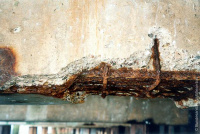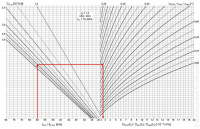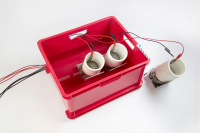Durability tests for rebar corrosion
From BAWiki
Practical verification methods enable the performance-based analysis and testing of rebar structures in terms of the carbonation- and chloride-induced corrosion of the reinforcements.

The durability of structures in sea water is heavily dependent on the risk of chloride-induced corrosion affecting their reinforcements. Various cases of damage demonstrate that chloride-penetration resistance cannot always be reliably ensured even if the standard requirements in accordance with DIN 1045-2 are complied with. Structures in waterways are thus subject to additional requirements governing the composition of concrete exposed to chlorides. Furthermore, the additional technical terms and conditions of contract ZTV-W LB 215 and ZTV-W LB 219 require durability tests to be performed on components in exposure classes XS2 and XS3 that have expected useful lives of over 50 years. The introduction of the factsheet entitled "Testing and evaluating the durability of rebar structures exposed to carbonation and the impact of chlorides (MDCC)" (2019) sets out performance-based strategies for:
- testing the durability of new rebar components to be constructed,
- evaluating the durability of existing rebar components, and
- testing the durability of rebar structures to be repaired using concrete replacement

in respect of carbonation- and chloride-induced rebar corrosion. The practical tools provided enable everyone involved in a construction project (planners, construction material manufacturers, contractors, client) to address the issue of the durability of rebar structures in a transparent way in respect of reinforcement corrosion.

The verification format is based on the results of fully probabilistic calculations using validated prediction models. The first measurement nomograms compare the key parameters (impact, material resistance, concrete cover, useful life) for various levels of reliability (Figure 2).
The chloride-penetration resistance can be determined by means of a diffusion test (for materials of an unknown composition, e.g. repair products) or an RCM test (for materials of a known composition, e.g. concrete) (Figure 3).
The BAW’s MDCC factsheet also details similar approaches for verifying durability in respect of carbonation.
back to: Structural Engineering Methods
